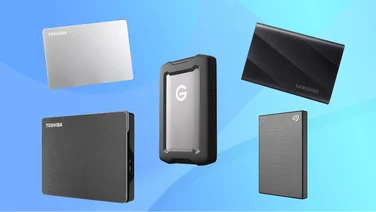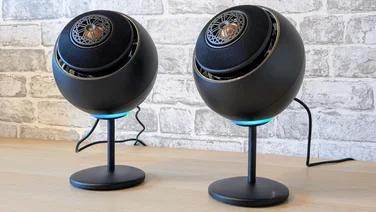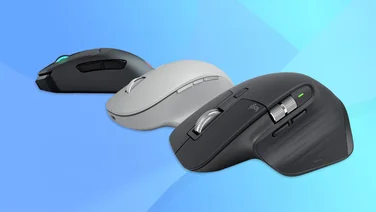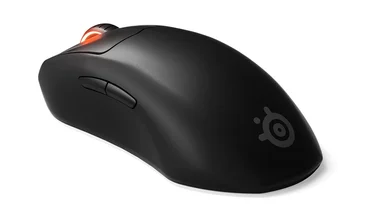To help us provide you with free impartial advice, we may earn a commission if you buy through links on our site. Learn more
- Best microSD card: At a glance
- How to choose the best microSD card for you
- How we test microSD cards
- The best microSD cards to buy in 2023
- 1. Integral Ultima Pro Premium High Speed: Best-value microSD card at higher capacities
- 2. SanDisk Extreme Pro: The microSD card with monster speeds and massive capacity
- 3. AmazonBasics microSD card: Another strong budget option
- 4. Samsung Pro Plus: Best value high-speed microSD card
- 5. Lexar Professional 1066x: Best micro-SD card for all-round performance
- 6. Integral Ultima Pro Professional High Speed: The best microSD card for running apps
- 7. Kingston Canvas Go! Plus: Serious speed for flagship smartphones and 4K video

The best microSD cards will support you whether you’re snapping away on your smartphone, shooting video on your action camera, downloading movies on your tablet, or trying to pack more games on your Nintendo Switch. Higher-resolution cameras, bigger games and high-quality video downloads put more pressure than ever on your device’s internal storage, and nobody likes deleting valuable content just to make space for more. And if you’ve just splashed out on a new Steam Deck, then you’ll know that, whatever SSD you’ve got onboard, you’re going to fill it up with must-play gaming classics in a jiffy.
Luckily, microSD cards keep getting more capacity at even lower prices, while speeds are improving all the time. Amazingly, a microSD card only slightly bigger than the average thumbnail can now cram in up to 1TB of data, while 512GB cards can be found for under £70, and 128GB cards for less than £20. Not all cards are the same, with a ridiculously complex system of specs and standards out there, plus fake cards and some really poor performers, but we’re here to steer you in the right direction and make sure that you find the right card for your device.
Best microSD card: At a glance
- Best value microSD card: Integral Ultima Pro Premium High Speed | From £5.99
- Best value high-speed microSD card: Samsung Pro Plus | From £31
- Best microSD card for massive capacity: SanDisk Extreme Pro | From £9.99
- Best for smartphones and action cameras: Kingston Canvas Go! Plus | From £18
How to choose the best microSD card for you
These days, most devices support most microSD cards. While some older devices will only support microSDHC cards with a maximum capacity of 32GB, most released in the last five years will also support microSDXC cards, with capacities up to 1TB and – potentially – 2TB. It’s always worth checking online or in the manual to see whether your smartphone or camera supports the higher capacities – some won’t go beyond 128GB or 256GB, while others need a firmware update – but in the majority of cases, your chosen card should work.
How well it will work is another issue, and this usually comes down to speed.
What do the different speed ratings mean?
This is where things can get mind-boggling, as the industry has adopted a range of speed classes and ratings in a bid to clarify how fast cards are and the uses to which they’re suited. For a start, they have a speed class, indicated by a number in a circle. Nearly all of them these days are class 10, so they can support a minimum sequential write speed of 10MB/sec. Class 10 cards will also have an Ultra High-Speed rating: U1 or U3, symbolised by a “U” with the relevant digit inside it. The faster U3 cards have a minimum sequential write speed of over 30MB/sec, which is crucial when you’re shooting 4K video or bursts of high-resolution photos.
On top of this, most cards now have a “V” (for video) rating, going from V6 all the way to V90, indicating write speeds of 6MB/sec to 90MB/sec. You need a V30 card to shoot 4K video at speeds of 60 to 120 frames per second, while V60 is the base level for shooting 8K video at 60fps. V90 is theoretically capable of handling 8K video at up to 120fps. However, given that only a handful of professional-grade cameras can offer that, and that they tend to use the larger CFexpress 2.0 cards for storage, this isn’t what you might call a must-have.
The more important speed rating right now is the card’s “A” rating. This defines the level of performance required for storing and running applications on a tablet, smartphone or handheld gaming system, where there’s often a huge discrepancy in performance with apps running from the device’s onboard storage and apps running from a microSD card. The A rating covers not just the minimum sequential write speed (in MB/sec), but also performance with the kind of random read and write operations that happen when you’re playing games or running more intensive media or content-creation apps. If you’re looking for a card to host apps and games on your flagship phone or tablet, we’d suggest looking past the A1 base level and buying an A2 card.
What about the UHS ratings?
These standards cover the speed of the interface between the microSD card and your device (or memory card reader), as this can also limit the maximum speed of data transfers between the two. UHS-I has a maximum speed of 104MB/sec, and you’ll usually see a Roman numeral “I” beneath the U1 logo. UHS-II takes that up to 156MB/sec (with data transferring in both directions) or 312MB/sec (with data transferring in only one direction).
The latest UHS-III standard is faster still, with speeds of up to 624MB/sec in both directions simultaneously, while the SD Express standard takes this up to a staggering 985MB/sec. However, neither standard seems to have taken off yet, either in terms of cards or the readers and devices to support them.
Should I always buy the fastest card I can afford?
Not necessarily – there’s a chance that your device won’t need it or won’t fully support it. If you’ve got a high-end 4K action camera, compact system camera, or DSLR, it may support the fastest V90 cards and UHS II, but check before you buy. You’ll struggle to find any tablet or smartphone that supports anything beyond UHS I and V30. Even shooting 4K video doesn’t require anything faster as long as you’re shooting at 30fps or 60fps, although professionals using a high-end SLR will want the overhead to ensure that their card doesn’t freeze in the middle of a shot.
That doesn’t mean you should avoid these cards. As they’re backwards-compatible, they will work in your existing devices and, with a suitable USB-to-UHS II adapter, your photos and videos will transfer to your computer in less time. That’s a big deal for professional photographers and videographers or cinematographers. For most of us, a cheaper V30, UHS I card will be fine.
One final thing we need to make clear is that speeds will depend on your microSD card reader. The reader built into your average laptop might not be capable of reading from or writing to the fastest cards at their full speed, and we’ve found huge variations in external readers, even those bundled with high-performance cards. If you’re investing in one of the faster microSD cards, grab the matching adaptor from the same manufacturer, or from a credible manufacturer like Lexar, SanDisk, Kingston or Integral. That goes double for UHS-II cards.
What if I’m buying for an action camera or dashcam?
Action cameras and – particularly – security cameras and dashcams have slightly different needs from other devices. As you’re shooting video, you tend to use up the capacity quickly then rewrite over and over again on the same card. With security cameras and dashcams, where you could be recording continuously, this is only going to happen that much faster. The longer it’s recording, the more of a beating the memory inside the microSD card is taking, causing it to wear out. For this reason, it’s worth looking for Endurance or Industrial microSD cards if you’re planning to use them in your security camera or dashcam. They’ll use specific types of flash memory that are more reliable, albeit at some cost to speed.
How we test microSD cards
We test microSD cards in a high-speed USB microSD card reader, connected to a laptop via a USB 3.2 Gen 2 Type-A connection. We use a combination of the CrystalDiskMark and AS-SSD benchmarks to test both sequential read and write speeds and random read/write speeds.
Sequential speeds matter most for copying large files and sustained data transfers, as they do when streaming 4K video to a phone or tablet, or recording 4K video from an action cam. Random read/write speeds are more important if you’re running apps or games from a microSD card installed in a smartphone or handheld gaming device.
Finally, we run file transfer tests using a 2GB video file, to check whether the sequential transfer speeds we measured earlier carry over into real-world use.
Read next: The best USB flash drives to buy
The best microSD cards to buy in 2023
1. Integral Ultima Pro Premium High Speed: Best-value microSD card at higher capacities
Price when reviewed: From £5.99 | Check price at Amazon

The Integral Ultima Pro might be cheap, but it’s still capable of respectable speeds. We logged its sequential read speeds at 96.1MB/sec and its sequential write speeds at 87.4MB/sec, although it came in slightly slower on our random read/write tests.
It’s a versatile card that will cope with almost any device and application, although its A1 rating means that there are faster options for running smartphone apps or more demanding games. Head for the more expensive Professional High Speed version below if that’s your aim. Otherwise, its great value for 64GB (£6.99), but even better value at 128GB (£15) and over, saving you a fiver or more at higher capacities. If you don’t need the high performance, why pay more?
Key specs – Speed ratings: Class 10, U3, UHS-I, A1; Storage capacities: 32GB to 512GB; Claimed speeds: Up to 100MB/sec read, up to 90MB/sec write (128GB), up to 100MB/sec read and 80MB/sec write (512B), up to 100MB/sec read and 70MB/sec write (32GB, 64GB, 256GB)
2. SanDisk Extreme Pro: The microSD card with monster speeds and massive capacity
Price when reviewed: From £9.99 | Check price at Amazon

On the face of it, the SanDisk Extreme Pro seems overpriced. This U3, V30, UHS-I card is significantly more expensive than the Samsung and Integral competition at most capacities, and when tested on our SanDisk ImageMate Pro card reader it wasn’t any faster, at least on sequential read and write speeds, which were 96MB/sec and 85.4MB/sec respectively.
Yet this card has some big points in its favour. First, it’s one of the only cards that comes in a whopping 1TB capacity. Second, stick it in one of SanDisk’s cheap MobileMate USB 3.0 readers and those read/write speeds leap up to 167MB/sec and 107MB/sec. What’s more, the random read/write speeds are high on both platforms, earning the card its A2 application rating.
It’s far from cheap and we suspect most smartphones won’t use its full performance, but it’s a sign of where things are going. The mid-range 128GB (£20) and 256GB (£31) versions are a little more affordable and would be ideal for your tablet, smartphone or Nintendo Switch.
Key specs – Speed ratings: Class 10, U3, UHS-I, A2; Storage capacities: 32GB to 1TB; Claimed speeds: Up to 170MB/sec read, up to 90MB/sec write (64GB to 1TB), up to 100MB/sec read and 90MB/sec write (32GB)
3. AmazonBasics microSD card: Another strong budget option

Price when reviewed: From £10 | Check price at Amazon
Trust the Amazon Basics range to come up with another cracking budget microSD card. It matches the Integral Ultima Pro on price, with a neat 2x 64GB bundle on offer, and performance is just as competitive. We measured sequential read speeds on our 128GB version at 98.76MB/sec and write speeds at 82MB/sec. Random read/write speeds are pretty good as well, and the card has an A2 speed class rating for running games and apps. Its random read speeds lag behind other A2 cards like the Lexar Professional 1066x and Samsung Pro Plus, but its random write speeds are surprisingly close, and sometimes higher.
In other words, it’s a steal for smartphone and tablet users or anyone wanting more storage for their Switch, and still a good option for your average DSLR or compact camera. Unless you find the Ultima Pro Premium High Speed even cheaper, buy away.
Key specs – Speed ratings: U3, UHS-I, A2, V30; Storage capacities: 64GB to 512GB; Claimed speeds: Up to 100MB/sec read, up to 30MB/sec write (64GB), up to 100MB/sec read, up to 90MB/sec write (128GB to 512GB)
4. Samsung Pro Plus: Best value high-speed microSD card

Price when reviewed: From £31 | Check price at Amazon
It’s not quite as speedy as some other cards, but the Samsung Pro Plus triumphs when it comes to bang for buck. You can pick up the 128GB version for around £20 or the 256GB for under £35, and in our benchmarks it hit sequential read speeds of 163MB/sec and sequential write speeds of 125.6MB/sec, bringing it close to the performance of the fastest cards we’ve tested. It also has an A2 class rating for app performance, while its random read/write speeds are but a whisker behind those of the Integral Ultima Pro Professional High Speed. It’s also a little cheaper than the Lexar Professional 1066x.
As a result, those hunting for the perfect balance of price and performance don’t need to look any further, and spending just a little more will get you your card bundled with Samsung’s excellent 160MB/sec USB card reader. What more could you want?
Key specs – Speed ratings: U3, UHS-I, A2, V30; Storage capacities: 64GB to 512GB; Claimed speeds: Up to 160MB/sec read, up to 120MB/sec write
5. Lexar Professional 1066x: Best micro-SD card for all-round performance

Price when reviewed: From £11 | Check price at Amazon
Despite being rated faster than the Lexar 1000x, the Lexar Professional 1066x actually uses the slower UHS-I interface. This turns out not to be a big deal, though, as we still measured sequential read speeds of up to 157MB/sec and write speeds of 80MB/sec on our 64GB sample, with the faster 128GB to 512GB versions capable of over 120MB/sec.
Often, fast sequential speeds come at the expense of random read/write speeds, but the A2-class 1066x is an exception; it’s not as speedy as the Integral Ultima Pro Professional High-Speed card below, but it’s faster than the SanDisk Extreme Pro and Samsung Evo Plus on this count, making it a fine all-round performer. If you’re looking for a card that can run apps or cover video on your mid-range or high-end smartphone, you won’t get much better than this.
Key specs – Speed ratings: Class 10, U3, UHS-I, A2; Storage capacities: 64GB to 512GB; Claimed speeds: Up to 160MB/sec read, up to 70MB/sec write (64GB), up to 160MB/sec read and 120MB/sec write (128GB to 512GB)
6. Integral Ultima Pro Professional High Speed: The best microSD card for running apps

Price when reviewed: From £8.69 | Check price at Amazon
With the right card reader, the Professional High-Speed version of the Ultima Pro can be a serious speed demon. With Integral’s own high-speed card reader, we were disappointed with its 99MB/sec and 88MB/sec sequential read/write speeds, but in a third-party high-speed reader, we saw read performance leap to 173MB/sec, with sequential write speeds of 139MB/sec. That write speed is the fastest we’ve seen from a UHS-I card.
What’s more, this card comes into its own on random read/write speed tests. Here, we saw the fastest performance we’ve seen from a microSD card, reaching speeds of over 12MB/sec. Other cards from Lexar, Kingston and Samsung are catching up, but this is still the speed king for app and game performance. Given that it’s only slightly more expensive than the basic Ultima Pro, that makes it one of the top options for smartphone or Switch use.
Key specs – Speed ratings: Class 10, U3, UHS-I, A2; Storage capacities: 64GB to 1TB; Claimed speeds: Up to 170MB/sec read, up to 120MB/sec write (64GB), up to 170MB/sec read, up to 130MB/sec write (128GB to 256GB), up to 180MB/sec read, up to 150MB/sec write (1TB)
7. Kingston Canvas Go! Plus: Serious speed for flagship smartphones and 4K video

Price when reviewed: From £18 | Check price at Amazon
Kingston’s high-performance card is fast enough for just about anything. In tests, our 128GB sample posted our fastest sequential read speed from a UHS-I card, at a barnstorming 185.2MB/sec, while its sequential read speeds busted through the claimed 90MB/sec to 108MB/sec. What’s more, you can trust the A2 app rating, as random read/write speeds are equally impressive, with read speeds of over 11MB/sec and write speeds of over 11MB/sec, putting it neck and neck with the Integral Ultima Pro Professional High Speed. Amazingly, simple file transfer tests backed up the benchmark results, with files copying across to the card at around 98MB/sec and back at approximately 160MB/sec.
This card is just as at home in a 4K action camera as it is in the newest Android smartphones, and you can find the 128GB version at some very attractive low prices. However, the 256GB (£28) and 512GB (£61) variants are comparatively expensive. The Integral just about beats it on write performance, but this card gives the fastest cards some major competition.
Key specs – Speed ratings: U3, UHS-I, A2, V30; Storage capacities: 128GB to 512GB; Claimed speeds: Up to 170MB/sec read, up to 70MB/sec write (64MB), Up to 170MB/sec read, up to 90MB/sec write (128GB to 256GB)














